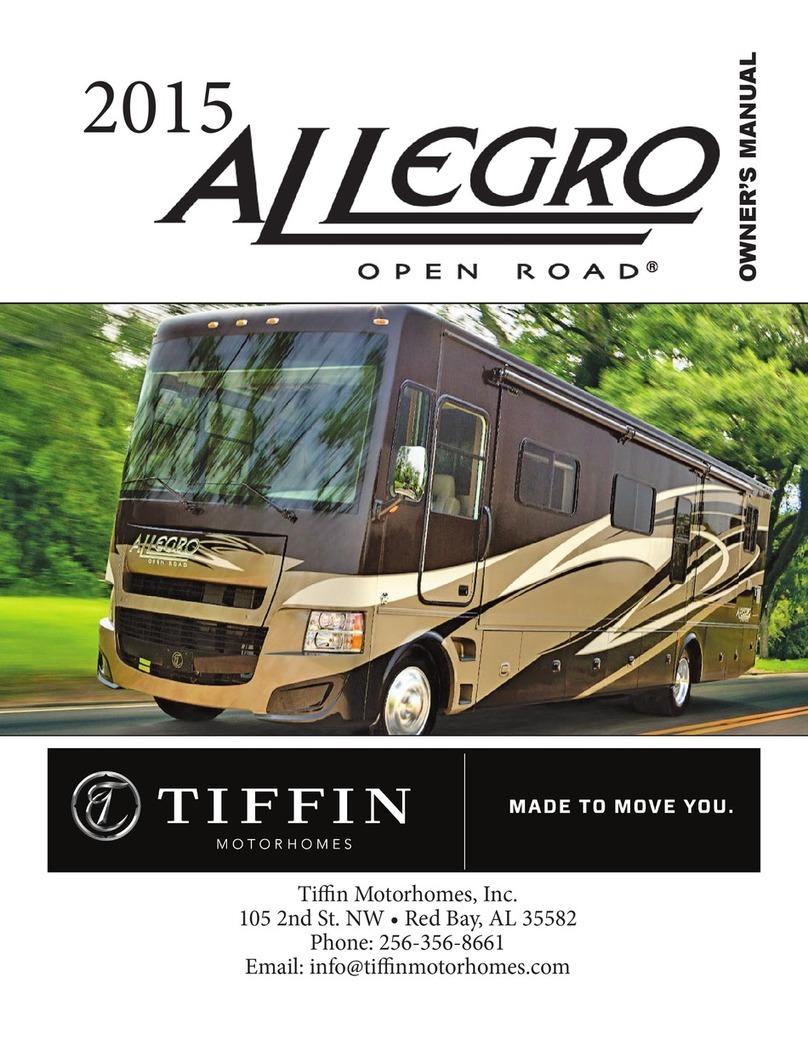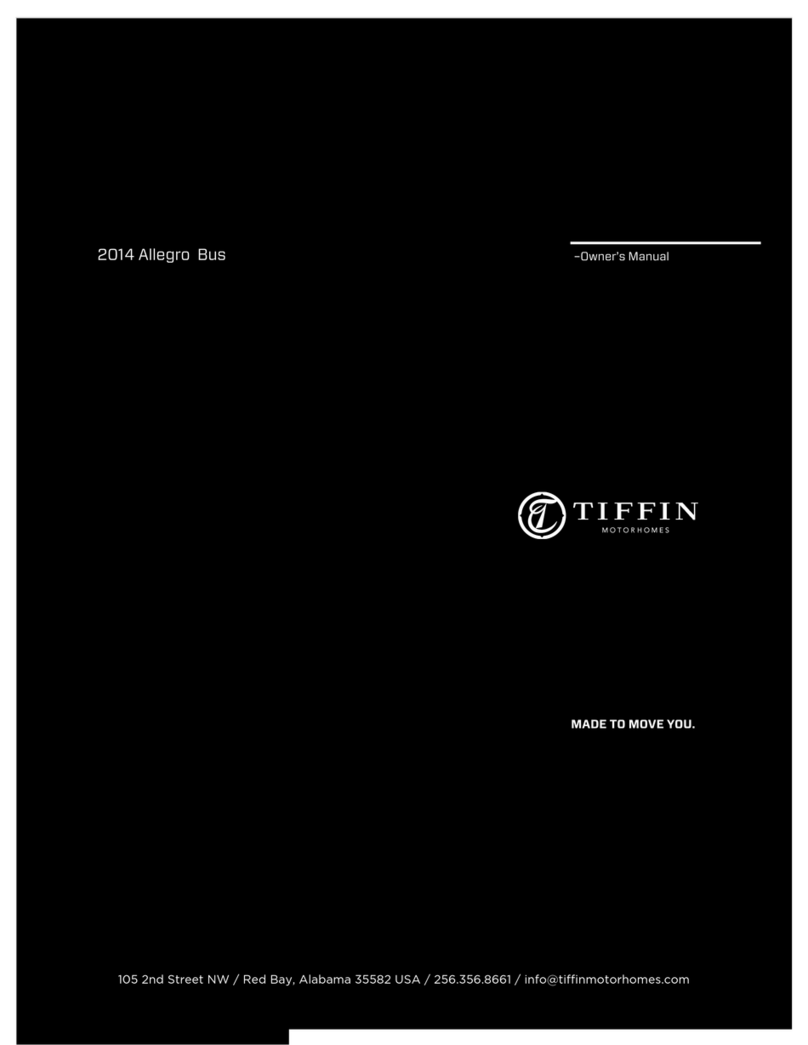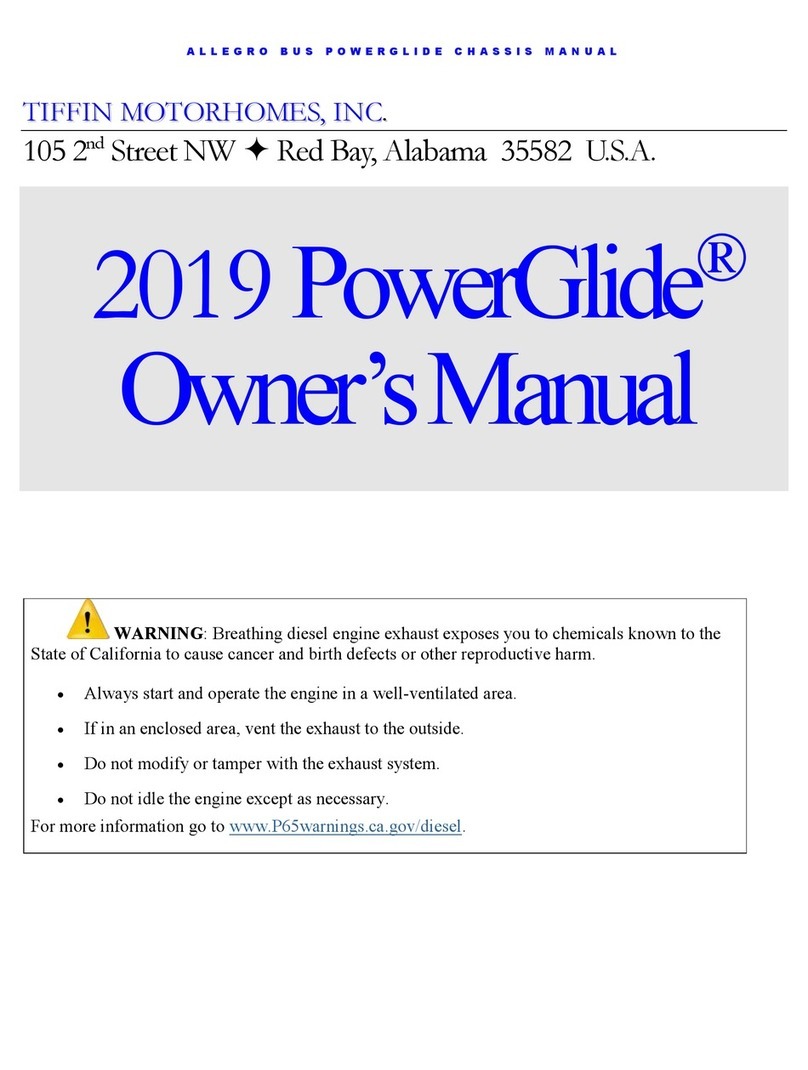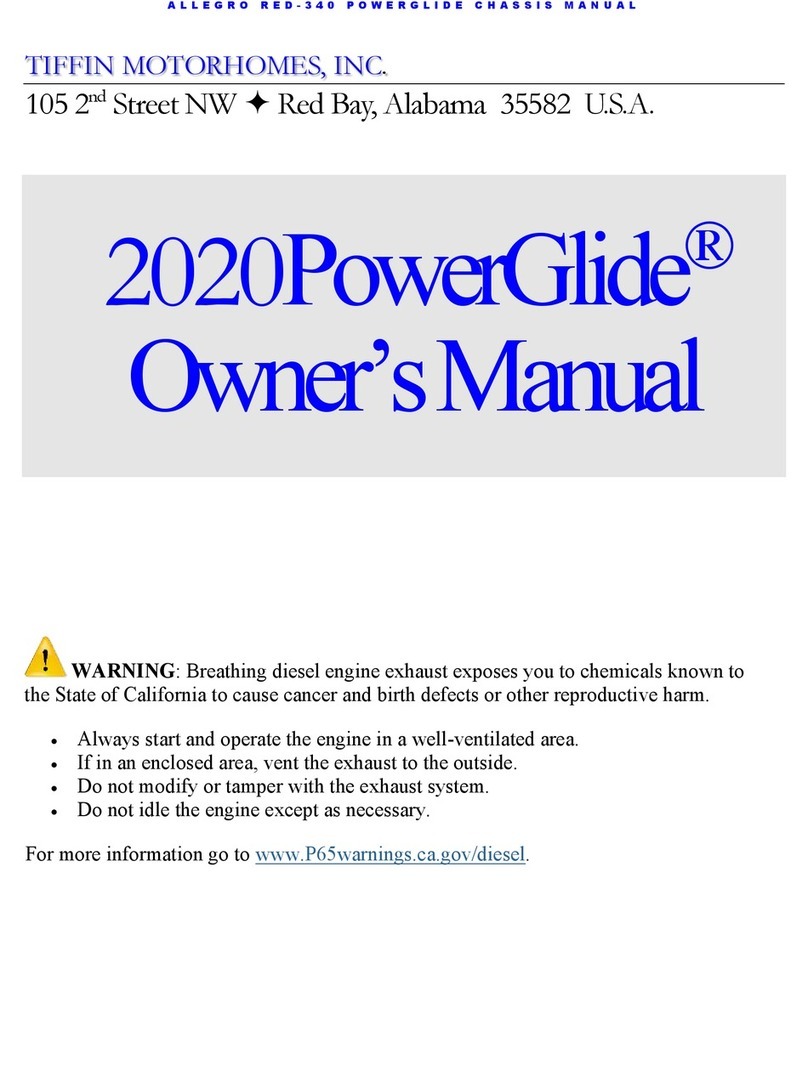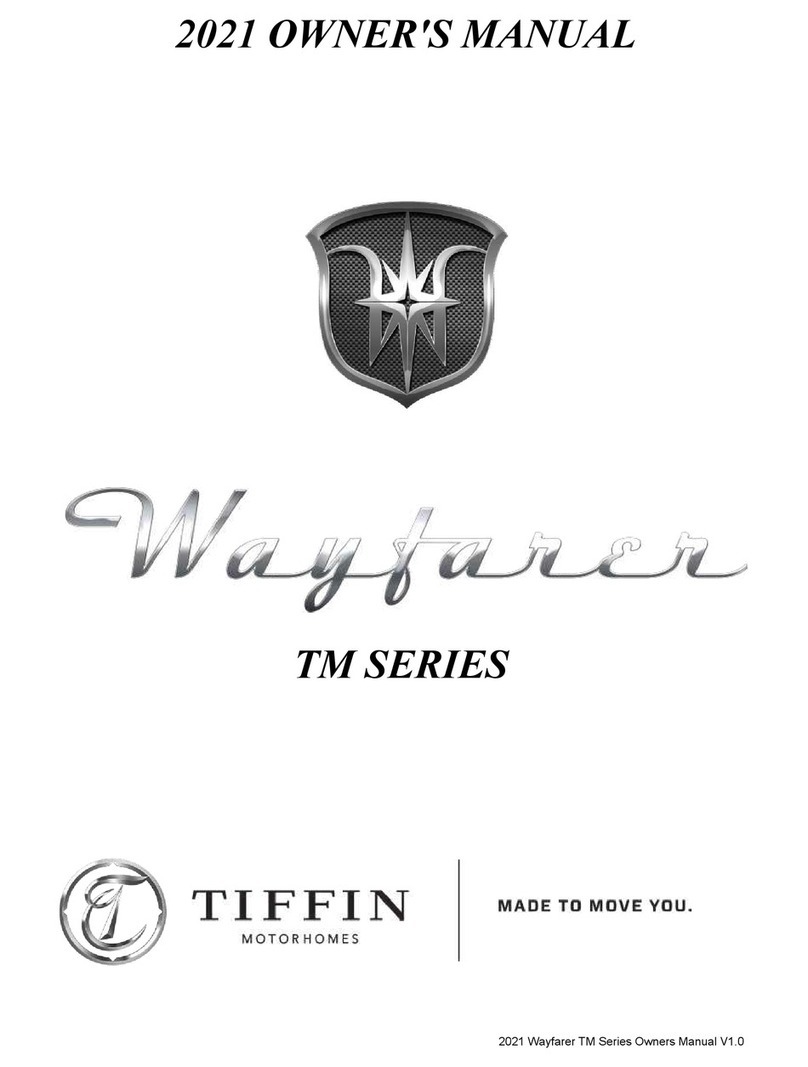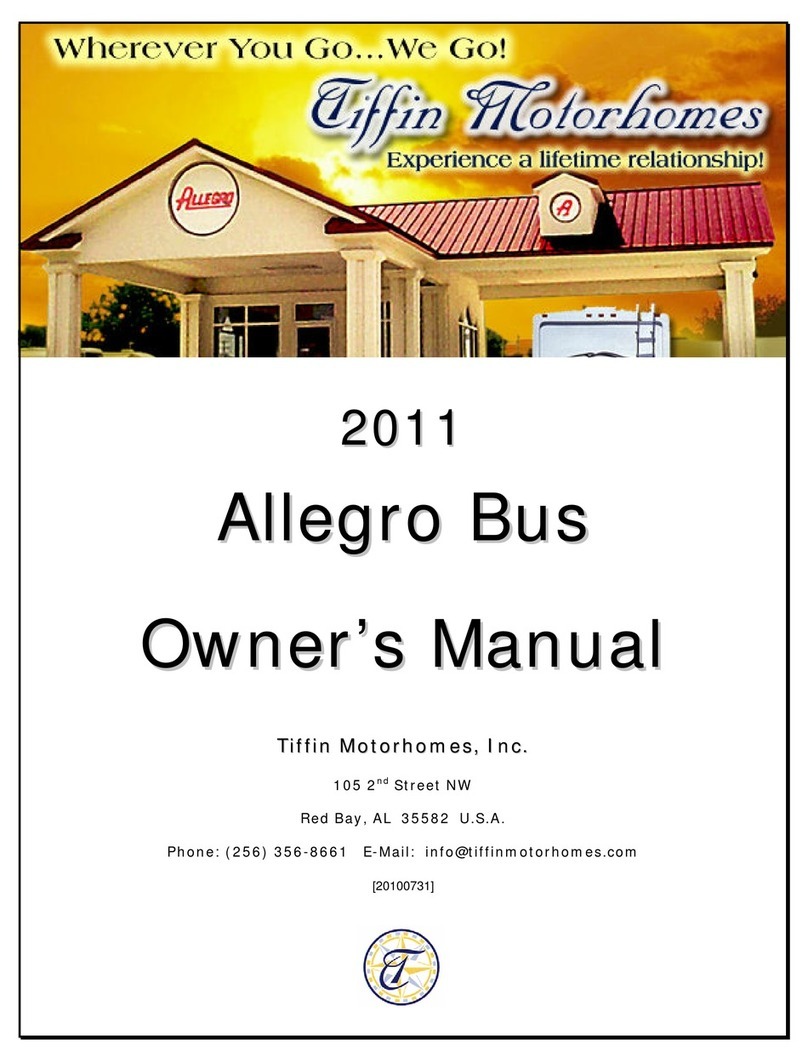Owner’s Information Package
The Owner’s Information Package (Figure 1-2) includes valuable documents about your Allegro and its
components and systems. By consulting the booklets and instruction
manuals included in the Owner’s Information Package, you will learn how to operate, maintain, and troubleshoot these
items safely and effectively. The Tiffin Motorhomes Allegro Owner’s Manual does not cover every possible detail of
equipment—standard and/or optional—installed on or in your vehicle.
As with all valuable documentation, please keep them in a safe, secure
place for your later use and consultation. Please complete the warranty
registration form and return to Tiffin Motorhomes Inc. within five
working days. A stamped copy will be returned to you for your records.
Again, please keep this document in a safe, secure place for your later use and
consultation.
Customer Relations
If you wish to schedule maintenance or service or wish to order parts, you should
notify your local authorized Tiffin Motorhomes Dealership to set up an appointment. If you are unsure of the location of
your nearest, authorized Tiffin Motorhomes Dealership; please access the Tiffin Motorhomes website at
www.tiffinmotorhomes.com and then click on the “Dealer Locater” button, then enter in the appropriate
search criteria such as zip code and search radius or dealer name and state, then click on “Find Locations”—
the dealer’s name, address, and telephone number will then be displayed for your use.
Specification Labels
There are two main numbers used to identify your Allegro. The Vehicle Identification Number (VIN) is the legal
identification of the completed vehicle. The VIN is the number used by the state for vehicle identification and
registration. Additionally, there is a Tiffin Motorhomes serial number. The Tiffin number is needed when you plan to
make an appointment for service or ordering parts through your Tiffin Motorhomes Dealership or Service Center. This
number can be found on the side of the dashboard.
A typical sample of this identification label is shown in Figure 1-3.
Another label affixed to your Allegro is the Recreational Vehicle Industrial
Association (RVIA) Weight Label (Figure 1-4) which is a required label for
your vehicle. Tiffin Motorhomes, a manufacturer-member of RVIA, has the
obligation to disclose the following information, at minimum, to the
purchaser of the motor home:
